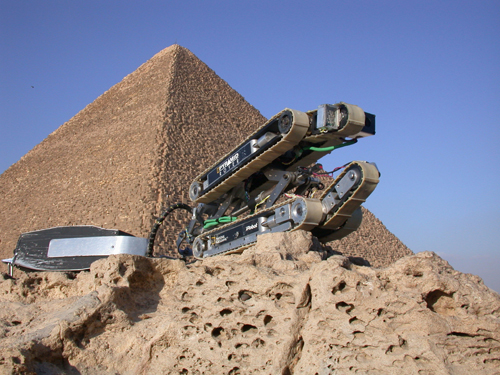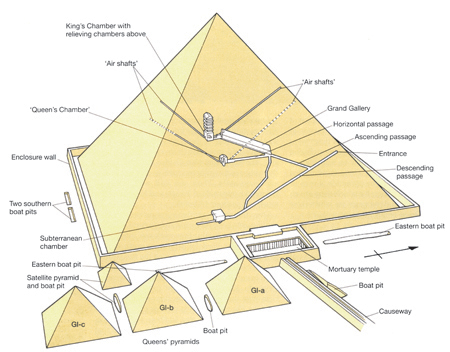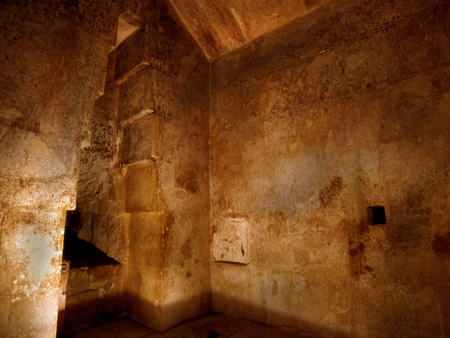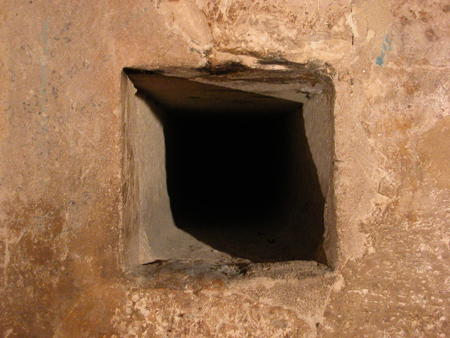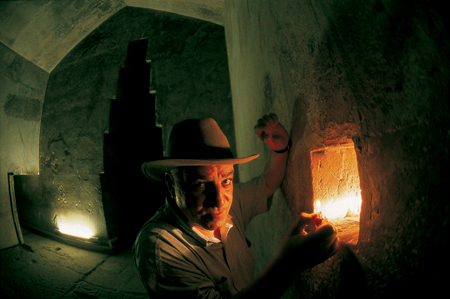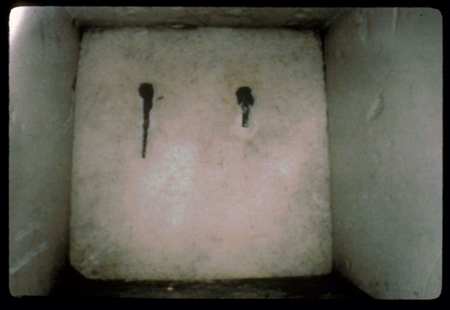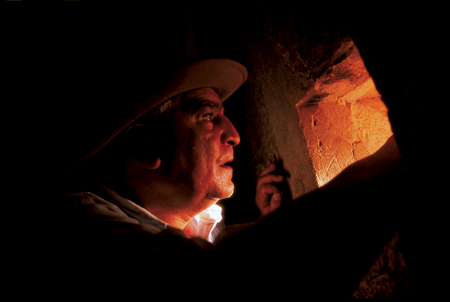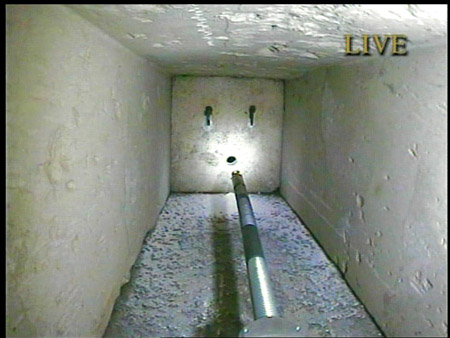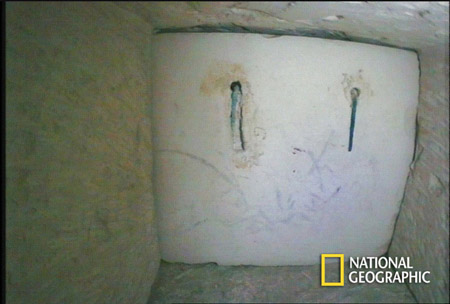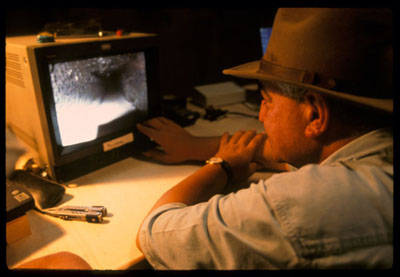|
News on the Robot and the Secret Doors inside the Great
Pyramid of Khufu
I received this week a proposal for collection of the pins and debris sampling inside the shafts leading from the so-called Queen's Chamber inside the Great Pyramid from Dr. Tc Ng, an independent researcher from Hong Kong. As many know, we
received a proposal for a robotic exploration of the shafts from National
University in Singapore (NUS). But this proposal described devices that
can developed that could be added to the NUS robot with resistible impact,
that will significantly enhance the upcoming robotic exploration, by
reliably collecting the pins as well as other small artifacts.
The modern entrance to the pyramid was created in the ninth century A.D. by el-Mamoun, son of Haroun el-Rashied from Arabian Nights. They just missed the true entrance, which lies about a third of the way up the north face. From the original entrance, a passage descends through the body of the pyramid, leading to an unfinished chamber carved into the bedrock under the pyramid. From a point partway along the descending passage, a second passage leads upward to a horizontal passage which leads in turn to a second chamber, misnamed the Queen’s Chamber (in fact, it was certainly not for any of Khufu’s queens, who had their own small pyramids).
From the point
where the first ascending passage meets the horizontal passage, an
incredible corbelled corridor, the Grand Gallery, ascends to a third
chamber, the “King’s Chamber”, where the granite sarcophagus of Khufu was
found, empty. Scholarly discussion about the building sequence and purpose
of these corridors and chambers is ongoing: many Egyptologists believe
that the three chambers represent three changes in the interior plan,
reflecting changes in Khufu’s cult, but others believe that all three
chambers were part of the original plan.
We needed to clean the pyramid, and also develop a system to permanently lower the humidity. One idea was to clean two narrow conduits, each about eight inches square, known as airshafts, that lead outward and upward to the exterior of the pyramid from the north and south walls of the highest chamber (the “King’s Chamber”) and put machines inside of them to create a ventilation system. I talked to Rainer Stadelmann, the director of the German Archaeological Institute in Cairo at that time, who in turn arranged for a robotic expert, Rudolf Gantenbrink, to come and work under the auspices of the Institute. Gantenbrink designed a robot called Wepwawet (an ancient Egyptian god of the dead) to investigate the airshafts in the third chamber. Using the robot, we cleared the shafts and set up fans inside to circulate the air and keep down the humidity.
The robot was also sent inside similar shafts in the second chamber (the
“Queen’s Chamber”). These shafts were originally discovered in September
of 1872, by British engineer Waynman Dixon. Dixon had pushed a wire
through the joints of the masonry of the south wall, and realized there
was a hollow space behind it. He then chiseled through the wall, and found
the southern shaft. He looked for a shaft in the equivalent area of the
north wall and found one. When he lit a candle and placed it in the
southern shaft, it flickered, telling him that there was a slight draught.
In order to discover more about the purpose of the shafts of the so-called Queen’s Chamber, further work had to be done. The German Institute in Cairo had the concession to the Great Pyramid, and I could see that they were not interested in completing the work on the shafts. It was impossible to assign the concession to Gantenbrink as he is an individual, and the antiquities law in Egypt only allows for concessions to be granted to institutions. So I decided that the Supreme Council of Antiquities (SCA) would do the work instead.
In September 2003, we sent another robot into the shafts to find out what was behind the door. We opened a hole 1 cm in diameter and we sent a camera through the hole and we found another 21 cm beyond the first one.
We also sent the robot into the northern airshaft and found that after 20 m the shaft bent and continued for another 8 m. This bend may indicate that it was designed to miss the grand gallery and it also explains that it was carved during the construction of the pyramid. The robot continued for another 60 m and then stopped in front of a door with two copper handles. It is the same distance as the door in the southern shaft with two copper handles.
The presence of these doors in the Great Pyramid raises many questions. One idea is that the doors are challenges that the king must face during his journey to the afterlife. It is written in the Pyramid Texts that the king will face bolts before he travels; perhaps this is a reference to the doors’ copper handles. Yet if this is true, why is Khufu’s pyramid the only one with such doors?
Also, why are there no doors in the shafts of the third chamber? Logically, they should be where the king’s body was buried. It is possible that these doors are evidence that Khufu’s actual burial chamber might be hidden somewhere inside of his pyramid. An ancient story from the Westcar Papyrus tells of how Khufu searched for the secret documents of the god Thoth in order to design the chambers of his pyramid; we are still trying to understand the complex he and his architects left behind.
|
